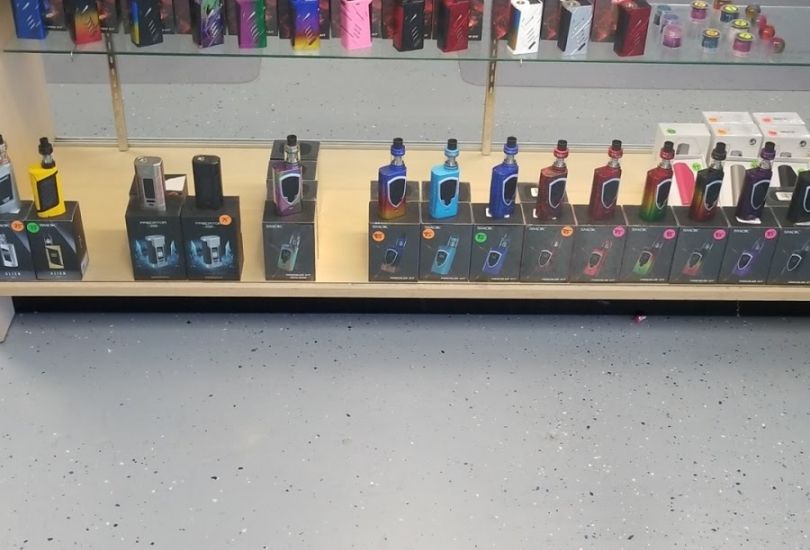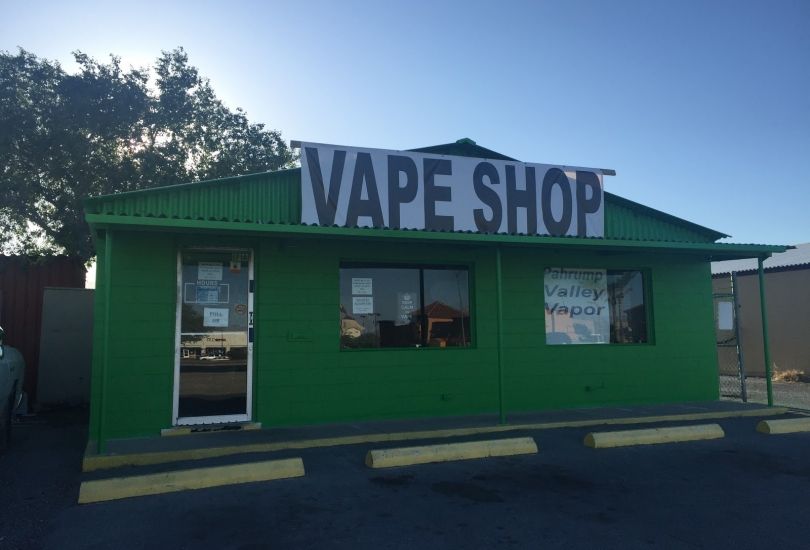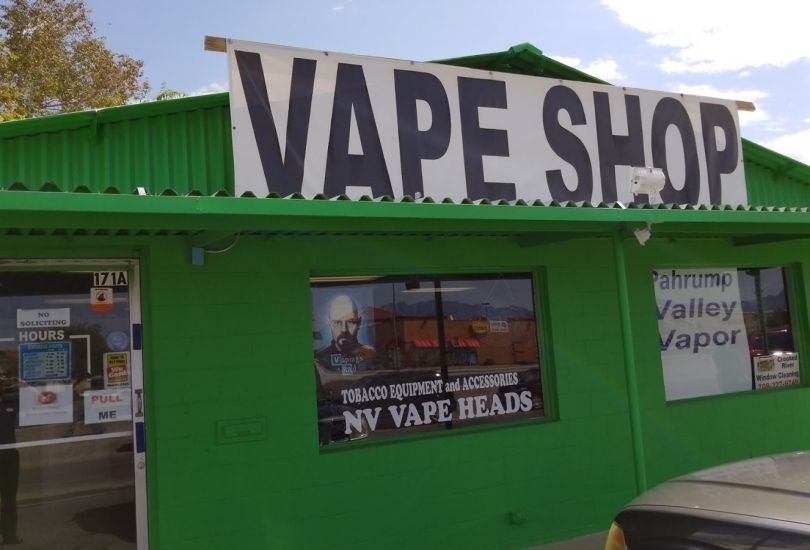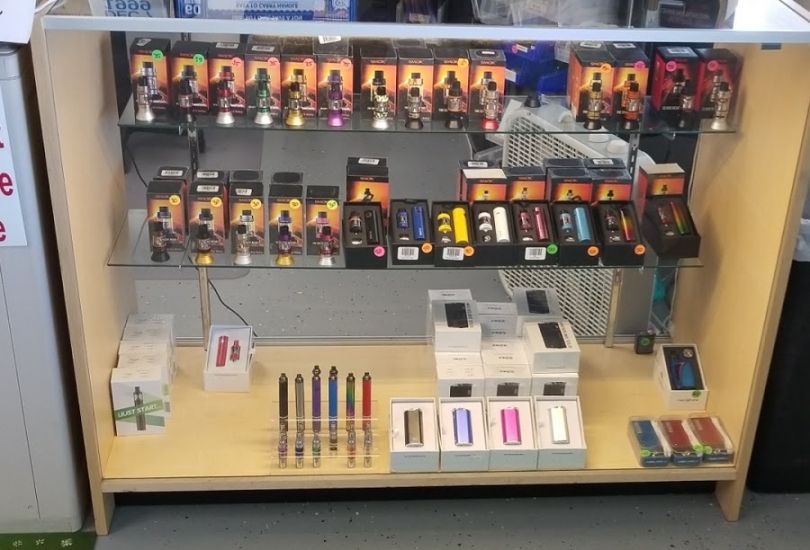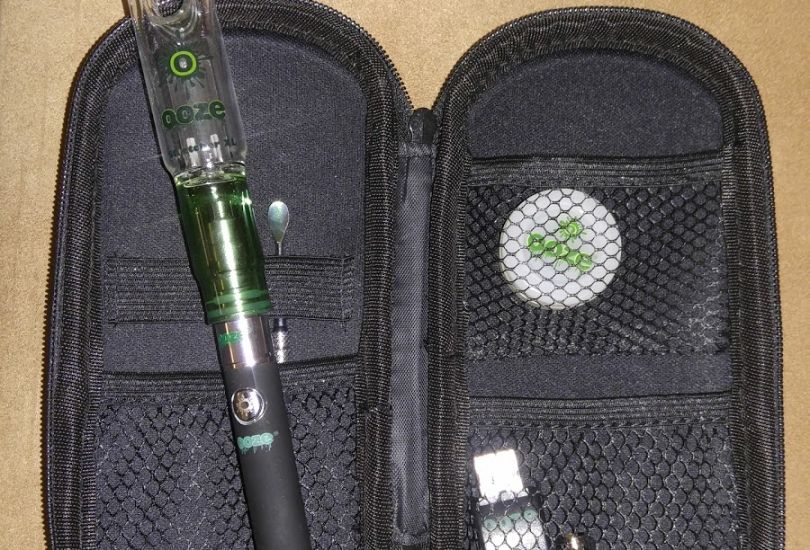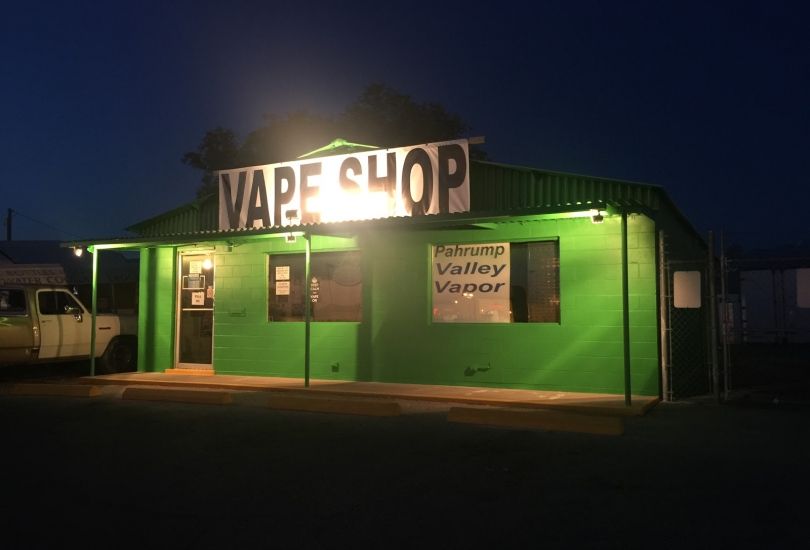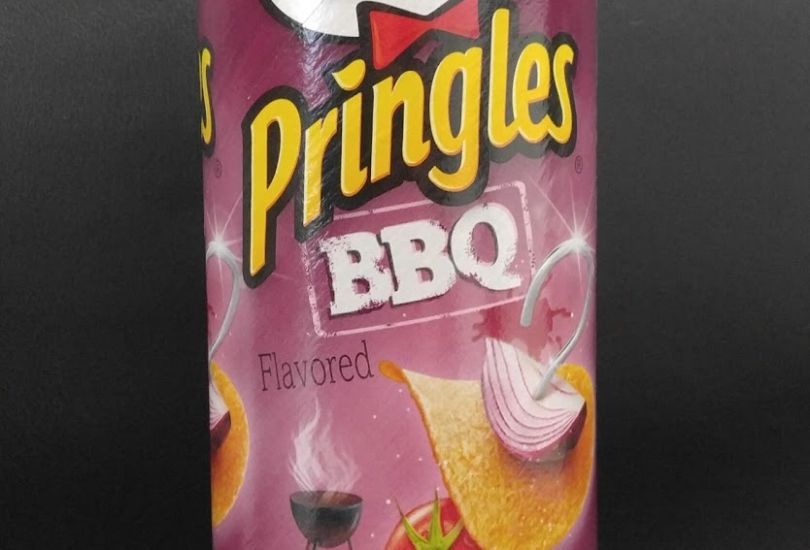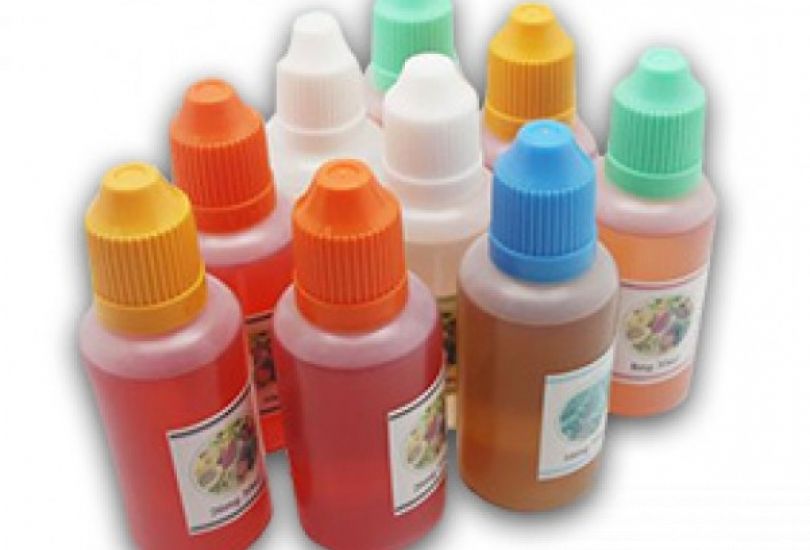About Pahrump Valley Vapor Store
Welcome to Pahrump Valley Vapor your full service vape shop. Weather you are shopping on line or in our store front we offer a wide variety of products and services. Our website has all kinds of useful information to help you better understand about vaping as well as keep you updated on the latest products available. You will find information about vaping as well as helpful hints to trouble shoot any issues that may arise. We also have a full service store front to come in and get training and assistance on all your vaping needs. We have a huge selection of e-Juice with over 100 flavors to choose from. Every bottle is mixed fresh to order! You will not get a bottle that has been sitting around on a shelf. With that many flavors we are sure we will have the perfect flavor for even the most finicky vaper.
In August 2015, the PHE’s report elicits the e-cigarette as a safer alternative to smoking tobacco. “E-Cigarettes: An Evidence Update†is a 113 page report that concludes that the best current estimate shows the electronic cigarette is about 95% less harmful than conventional cigarettes and could lead to its future approval as an alternative drug to tobacco withdrawal such as nicotine patches. Shortly after its release, a few scientists raised concerns about the 95% value and the authors, Ann McNeill and Peter Hajek published a letter to clarify
“We consider the 5% residual risk to be a cautious estimate allowing for this uncertainty†Prof Ann McNeill and Prof Peter Hajek The report has rapidly been backed by 12 British public health organizations that reiterated their commitment to inform smokers and health professionals about this “popular†tool for smoking cessation.
The Royal College of Physicians of London endorse vaping Royal College of Physicians London endorse vaping As pointed out by Clive Bates, the endorsement of vaping by the Royal College of Physicians London in 2015 has marked a new era in vaping and opened the path to a more liberal approach of vaping in England. The 200 page report released by the College addresses several crucial questions regarding recent controversies and misunderstanding and clarify the situation with regard to e-cigarette and:
The 2016 version includes observational data from 24 studies regarding outcomes of vaping and none did find any outcome of vaping for up to two years. The review also concludes that throat and mouth/nose irritation are the most commonly reported side effects in the short-to medium-term (up to two years).
More technical than the rest of the scientific reviews, the Cochrane 2016 update is considered an “independent, rigorous assessment of the best available evidence to date about electronic cigarettes for quitting smokingâ€.
The University of Victoria’s Centre for Addictions Research of BC (CARBC) released in January 2017 a literature review and a synthesis of scientific research on vaping. UVic’s researchers found “very encouraging†the conclusions of comparative studies between smoking and vaping in a tobacco harm reduction context. The absence of tar, of carbon monoxide and of 77% of the toxins contained in tobacco smoke are established facts in favor of e-cigarettes.
Experts’ recommendations are that the “best available evidence†be used for regulatory purposes and not “ungrounded fears of a ‘gateway effect’â€.
The presence of aldehydes in the aerosol of e-cigarettes is a major concern for many vapers. The most important ones in term of concentration are acrolein, acetaldehyde and formaldehyde because they are provided by thermal degradation of Vegetal Glycerin (VG) for the first one and of Propylene Glycol (PG) for the two others. PG and VG build up more than 85% of the mass of e-liquid but the mode of production of aldehydes is dependent on the vaporization process, especially temperature, duration of the ignition phase, number of coils. Dry puffs, that consist in heating the coil when the wick is not wet enough, is leading to skyrocketing concentrations of aldehydes that, in other conditions would remain at least one order of magnitude lower than with combustible cigarettes.
Aldehydes are worrisome because of alarming headlines in the press and because no comparison is made with combustible products, most of the time. One of the most helpful demonstration is the one published by Dr Robert Cranfield on Youtube in response to bad science reports. This is far from being quantitative but it has the merit of being cristal clear for most vapers with regard to the concentration measured with cigarettes, e-cigarettes and cigars.
In the field of aldehydes, the research group leaded by Maciej Goniewicz at Roswell Park Cancer Institute in Buffalo (NY, USA) and the research group leaded by Hugo Destaillats at the Environmental Energy Technologies Division of the Lawrence Berkeley National Laboratory in Berkeley (CA, USA) are certainly one of the most promising groups in this field.
A good overview of all the issues related to e-cigarette emissions is given by Konstantinos Farsalinos during the Vapexpo 2016 event in Paris.
Diacetyl, a matter of concern? Diacetyl is often used to give a bettered taste to food roducts, including pop corn The case of diacetyl is different from that of aldehydes since this chemical belongs to another family, di-ketones and also because the source of diacetyl is generally the flavorings added to the e-liquid and not a reaction that occurs when heating the e-liquid. Described by experts as an avoidable constituent of e-liquids, diacetyl is now part of a list published by the AFNOR for un-wanted products with a threshold that remains at the level of impurity.
Although diacetyl has been associated to “popcorn lungâ€, no such lung disease has been described among vapers and only a few cases were published in relation to exposure to diacetyl in the food. Hence, it is not likely that diacetyl represent a threat to vapers, at least in Europe, where the norms published by the AFNOR apply to e-liquids
Acetylpropionyl (2,3-pentanedione) is another di-ketone with similar properties as diacetyl, not only from a gustatory point of view but also in terms of risk profile. Unfortunately, it tends to replace diacetyl in buttered e-liquids. Awareness is also raised about other chocolate and nutty flavors, cinnamon but although some compounds in e-liquids deserve particular attention to improve their safety, this shouldn’t push away former smokers to try less harmful alternatives such as e-cigarettes. Especially if they can’t or don’t want to quit tobacco. The experts recommend not to stick to a single taste and to try different flavors.
The benefits of vaping Clinical studies reveal several benefits of vaping against smoking Although vaping is still presented as a relatively risky behavior for vapers, Prof Riccardo Polosa decided to break with conventions and to present vaping in terms of benefits, in the light of some scientific publications.
The relative risk of vaping, when presented against smoking is however not the view that is shared by most regulators who rather invoke the precautionary principle to impose a harsh regulation to vaping products.
Flavors, an unavoidable aspect Fruity flavors are acclaimed by vapers Flavors are some chemicals added to the e-liquid to give it a special taste. Researchers estimate that there exists about 300 different e-liquid manufacturers and that the amount of different flavors is in the range of 8,000.
In Europe and in the UK, some norms have been established to guaranty a maximum of safety with e-liquids. However, the flavorings used by the vaping sector, even if they comply with the regulation of food products, present no guaranty of safety upon ingestion. A survey that The Vaping Post conducted in collaboration with the AshTrayBlog addressed the “throat hitâ€, a feeling that characterizes smoking, and showed that the interest into this feeling among vapers is decreasing with increasing the interest into flavors.
Two publications have been released that confirm the interest of flavors for vapers but conclude differently about the topic. The first one, conducted in Connecticut, confirms that flavored e-liquids significantly contribute to a successful switch from smoking. The study shows the interesting role of menthol for vapers, a flavor that is at the center of a debate with combustible tobacco products. However, the researchers failed to conclude about the efficiency of their model to fight against craving, probably because not enough nicotine was delivered by the model they elected.
The other study conducted in Belgium showed the importance of nicotine containing e-cigarettes to reduce craving for tobacco cigarettes. But the interactions between the presence or absence of nicotine and other factors were also tested, in particular e-cigarette handling, inhaling/exhaling and visual cues. Interestingly, this study concludes that flavorings were not essential.
Compared to smoking, considered the major cause of preventable death, vaping has never been cited as the direct cause of a single death to date. However, it doesn’t mean that using an e-cigarette is not the source of accidents.
The Vaping Post reported on fatal and non-fatal accidents linked to e-liquid ingestion that occurred in domestic environments and that could have been avoided with more rigorous measures, independent from any type of regulatory process. Indeed, child-safety compliant containers are now used for nicotine and non-nicotine e-liquids in Europe and in the USA, which contribute to drastically reduce the risk of ingestion.
Other incidents concern the explosion of batteries to which we dedicated a whole chapter. This cause of accidents is highly preventable and does not necessarily concerns the vaping sector.
In turn, we also addressed the case where the switch to vaping at the same time reduced human losses and human pressure on the environment in Minnesota.
The tricky case of Heat-not-burn cigarettes The new iQOS heat stick branded “Heetsâ€. An non-negligible number of our articles published over the last 6 months are covering HNB products and especially the iQOS, whose status as a modified risk tobacco product (MRTP) is pending a decision by the US FDA. If the MRTP claim is approved by the FDA, a significant marketing advantage will be given to Altria and PMI over reduced risk tobacco products, including e-cigarettes.
Proclaimed safer than combustible tobacco cigarettes by their manufacturers, independent research has been scarce to address heated tobacco devices. We reported the work of a German team who addressed nicotine delivery and we suggested that, from a regulatory aspect, the case of iQOS hardly matches with EU recommendations through the TPD.
The iQOS, that has been launched with success in Japan has, since, reached the UK and other cities where its manufacturer is doing a subtle work to promote the product without advertising it, and is expected to be distributed by Altria and PMI in the USA. In this communication game, the Big Tobacco companies are certainly thousands of miles in advance compared to the independent vaping industry.
Contact Information
Opening Hours:
Monday: 9:00 AM – 5:00 PM
Tuesday: 9:00 AM – 5:00 PM
Wednesday: 9:00 AM – 5:00 PM
Thursday: 9:00 AM – 5:00 PM
Friday: 9:00 AM – 5:00 PM
Saturday: 10:00 AM – 4:00 PM
Sunday: Closed

